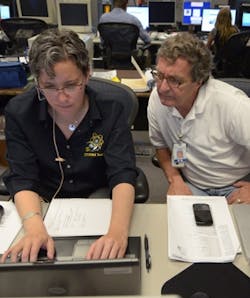Test of Orion navigation system made during latest space shuttle mission
Posted by John McHaleDENVER, 1 June 2011. Engineers from NASA, Ball Aerospace, and Lockheed Martin ran a test of the Orion Multi-Purpose Crew Vehicle (MPCV) navigation system during the last mission of Space Shuttle Endeavour. During the mission the shuttle commander, Mark Kelly made an MPCV-like approach to the International Space Station as part of the sensor test for Orion Relative Navigation Risk Mitigation (STORRM). The rendezvous verified the performance of the MPCV’s next generation docking sensor.The NASA, Lockheed Martin [NYSE:LMT] and Ball Aerospace [NYSE: BLL] team collaborated with STS-134 Mission Specialist Andrew Feustel to complete the test, which will improve the efficiency of future rendezvous and docking maneuvers. "This flight test demonstrated the exceptional capability of the Vision Navigation Sensor (VNS) and the Docking Camera, two key components of the Orion relative navigation system," says Catherine Boone, a Lockheed Martin electro-optics engineer who was working in NASA's Mission Control Center during the re-rendezvous event. "We were able to collect about 600 gigabytes of data that will verify the design meets the high performance standards required for Orion MPCV and other future spacecraft. Follow-on testing at our Space Operations Simulation Center in Denver will also provide an opportunity to look at how we may be able to expand on that performance to make the system as powerful and accurate as possible for the dynamic environments of deep-space exploration missions."STORRM demonstrates a relative navigation solution, which provides the required docking accuracy and range necessary to meet crew safety, mass, volume, and power requirements for a variety of future NASA missions, including deep space. The STORRM hardware components consist of the advanced laser-based VNS, a high definition docking camera, an avionics assembly for power and data recordING, reflective docking targets, AND A a space-certified laptop computer.STORRM's VNS provided continuous measurements from as far away as three-and-a-half miles to within six feet of the space station -- three times the range capability of the current relative navigation sensor. It also provided three-dimensional images of the docking target.STORRM is led by NASA's Multi-Purpose Crew Vehicle Project Office at NASA Johnson Space Center in partnership with NASA Langley Research Center, Lockheed Martin Space Systems Company, and Ball Aerospace & Technologies Corp.
